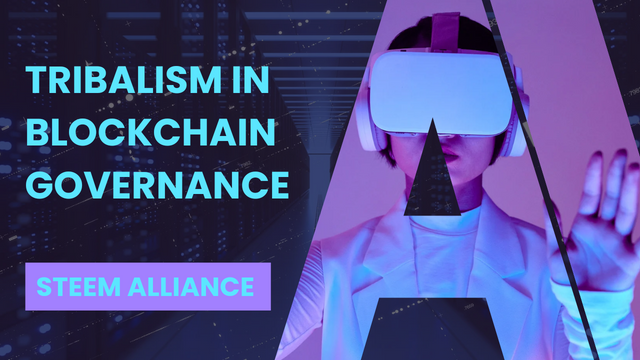Blockchain technology known for its potential to distribute power and incorporate many people, has faced problems associated with tribalism in governance too. As blockchain projects grow and communities begin to take shape around them, there can be tribalistic behaviors which cause division of the groups involved as well as slowed progress due to conflicts. In this post I will discuss what is meant by tribalism in blockchain governance, its impact on the community and different suggestions that can foster unity among decentralized communities.

Understanding Tribalism in Blockchain Governance
Fragmented Communities: Developers make up one part while miners form another part along with investors and users plus enthusiasts who also belong somewhere within this ecosystem characterized by diversity which may either bring about innovation or spark off divisions based on tribes struggling against each other over who should have more control or power.
Factionalism and Forks: Within blockchain governance systems there is usually a lot of complexities caused by tribalism where various factions want different things such as changes in protocols used or how they are governed. In some instances these disagreements become so intense that they lead to hard forks which create two competing chains since each group wants their own way.
Causes of Tribalism
Financial Interests: This is where the money lies. People look after their own wealth or try to make more. In terms of blockchain governance, financial incentives have a significant impact because stakeholders want maximum benefits and security for their investments. When different groups are motivated by conflicting economic factors, they tend to be tribalistic as each tribe only cares about its interests without considering what is good for anyone else.
Ideological Variations: The principles held by various blockchain communities differ greatly but not limited to decentralization, censorship resistance and privacy. When individuals disagree on how things should be done within communities based on different ideological points concerning governance or development methods this can lead to divisions among them.
Ways of Governance: These are structures that put in place procedures through which decisions can be made in a community or organization. In blockchain communities, the design features used for governing might end up creating tribalistic behavior among members with different views regarding what constitutes good governance. It could happen especially when there is no central authority and therefore decentralized networks find it difficult to agree on matters of governance thus resulting into gridlock where nothing moves forward due to polarization caused by factionalism arising from various camps having their preferred ways structured.
Complexities of Tribalism in Blockchain Governance

Reduced Efficiency: Making choices gets tough if you do not see eye to eye with others. This is exactly what happens when tribes emerge within a blockchain community. Disagreements over changes that should be made on protocols, upgrades or even funding allocations may bring everything to a standstill thereby slowing down progress of the project.
Reputation Damage: The reputation of blockchain projects can be destroyed by public disputes and fights which make users, investors and stakeholders. In this way the project loses confidence. Communities where tribalism is prevalent are less likely to attract new members or investments because they are associated with negative perceptions.
Fragmentation and Forking: In some instances, tribes might split communities resulting into bitter hard forks. This has the deadliest effects such as weakening network effect, decreasing community resources and mixing users together with developers.
Approaches to Reduce Tribalism
Engaging the Community: Unity among people can be achieved through engaging them actively in activities. It should be applied to blockchain technology communities too. Being open about information sharing while ensuring inclusive decision making procedures may foster collaboration within these societies. It also helps to allow all stakeholders take part in governance discussions where consensus mechanisms become easier and they reduce divisions based on tribes.
Shared Objectives: Sometimes it takes emphasizing common goals, values as well principles so that people look beyond their affiliations towards achieving something great together. Projects which prioritize user empowerment, innovation and decentralization often succeed at support from different factions across the tribes.
Education and Awareness: It is possible to cultivate a civilization of good manners in the blockchain ecosystem by simply teaching people about the dangers of tribalism and benefits of collaboration or negotiation. Also, breaking down the ideological barriers through building relationships between different parties involved can be very helpful in enhancing positive conversations.
Conclusion
If tribalism is not addressed properly, Tribalism could become a big problem for decentralized systems. It threatens inclusivity and universality which are the key features of any blockchain technology. Unity should be embraced among such communities towards achieving common objectives. But this may not be achieved unless members identify the benefits of unity and collaboration. The members should not make tribes and they should avoid tribalism in the governance of the blockchain to get more benefits.
X Permotion
https://twitter.com/shabbir_saghar/status/1787702636172513654?t=OGIVhxxgECtnPfOsQc2hHg&s=19
Downvoting a post can decrease pending rewards and make it less visible. Common reasons:
Submit
Upvoted! Thank you for supporting witness @jswit.
Downvoting a post can decrease pending rewards and make it less visible. Common reasons:
Submit
Note:- ✅
Regards,
@theentertainer
Downvoting a post can decrease pending rewards and make it less visible. Common reasons:
Submit